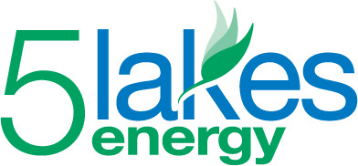According to a recent white paper from the Institute for Energy Innovation (IEI), in most cases, the growth of solar distributed generation (DG) systems represents a net benefit to all utility customers. The paper was featured in a story by Michigan Public Radio as well as an article in PV Magazine.
The IEI white paper, entitled “Solar Energy in Michigan: The Economic Impact of Distributed Generation on Non-Solar Customers,” describes the growth of solar DG across the country, reviews close to 50 recent studies comparing value of solar assessments and net metering policies, and offers a series of recommendations to the Michigan Public Service Commission. The paper finds that the benefits of distributed solar generation systems exceed the retail cost of electricity and the value of solar in the majority of cases studied is greater than the compensation solar customers received under ‘net metering’ programs.
The paper also argues that solar DG needs to be appropriately valued based on the benefits it provides to customers and the electric grid. As the Michigan Public Service Commission and stakeholders consider the appropriate tariff for distributed energy systems as required under PA 341 and 342 of 2016, it’s important to provide fairness for ratepayers who have installed solar DG and those who have not as well as ensure that the true costs and benefits of solar DG are taken into account.
Key findings of the IEI white paper are that:
- The vast majority of studies conducted to date find that customers participating in net metering programs represent a net benefit to the grid.
- While net energy metering customers receive credits that reduce or eliminate their monthly utility bills, solar DG provides measurable and monetizable benefits to the power system that should be considered when evaluating the true impact of solar DG and net energy metering on all ratepayers.
- Solar DG both reduces demand for power from the utility and provides power to the grid when the systems generate more power than is used at a residential or commercial site. This surplus power is generated at or near peak times when the cost to the utility of procuring additional power is most expensive.
- Net energy metering represents an attempt to balance the true costs and benefits of the energy being produced and that which is consumed in a way that is simple, fair, and convenient for both the utility and its customers. Therefore, any tariff should fully compensate solar DG customers for the value their systems provide.
- Adopting a transparent, comprehensive standard valuation methodology such as the Interstate Renewable Energy Council model can help ensure full accounting of both the costs and benefits of solar DG. While the calculations necessary to develop a value of solar differ from those needed to assess the cost to serve solar DG customers, IEI specifically endorses the Michigan Public Service Commission’s intent to include a VOS study as part of its examination of the costs and benefits associated with distributed generation and net metering.
- Because locational factors can affect solar valuations, access to location-specific utility data should be made available to stakeholders as part of the development of new tariff mechanisms.
To download and read the report in its entirety, click here.
